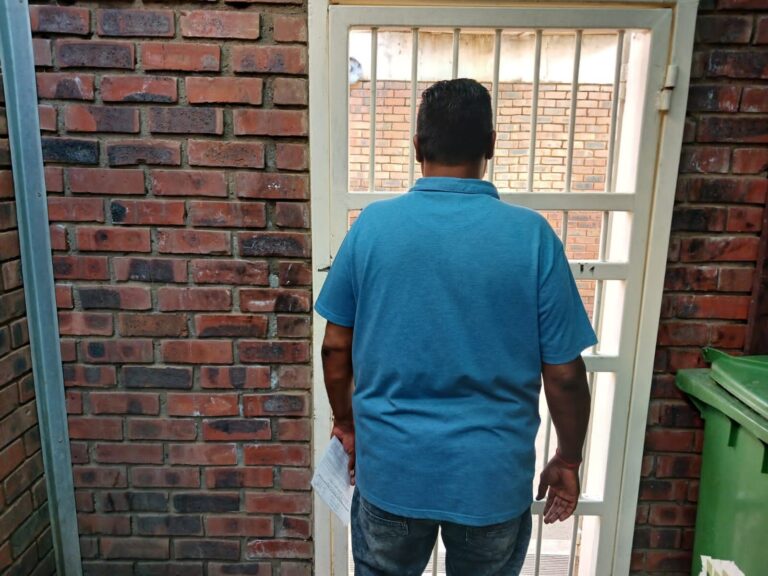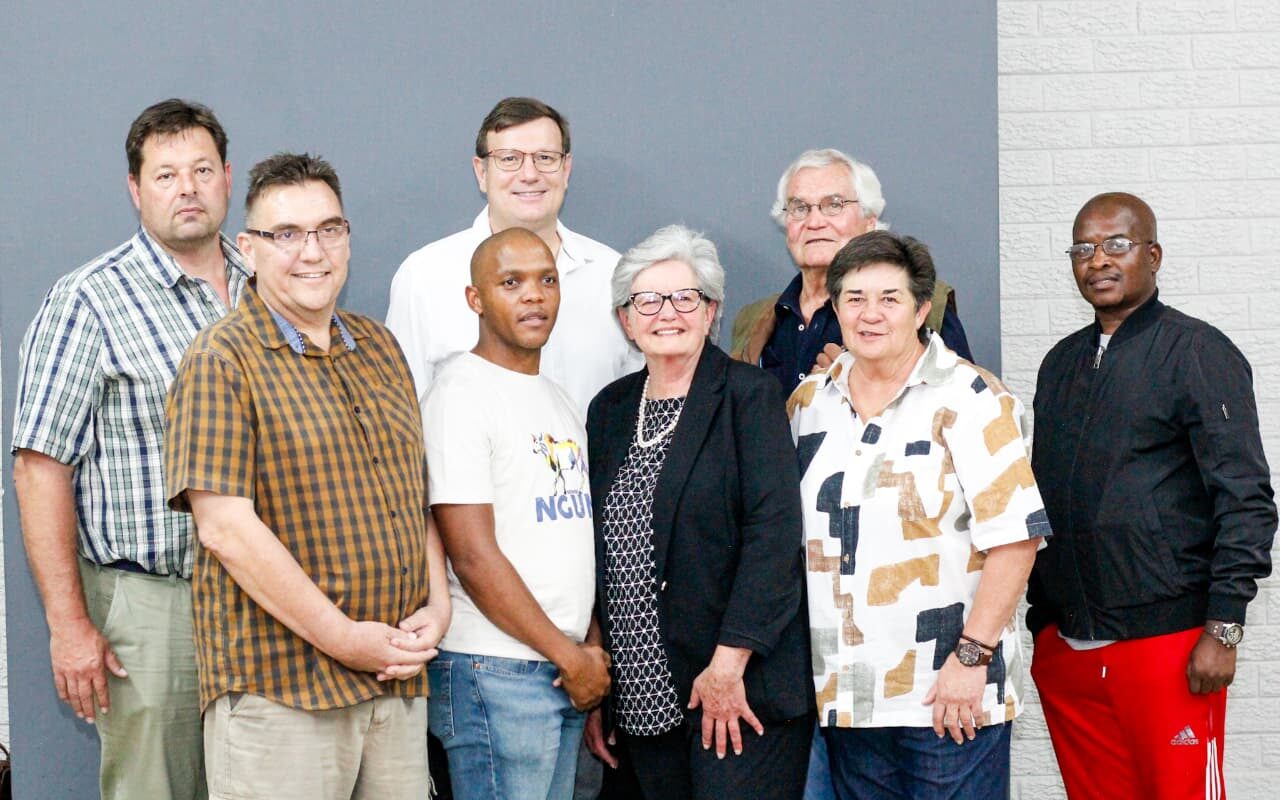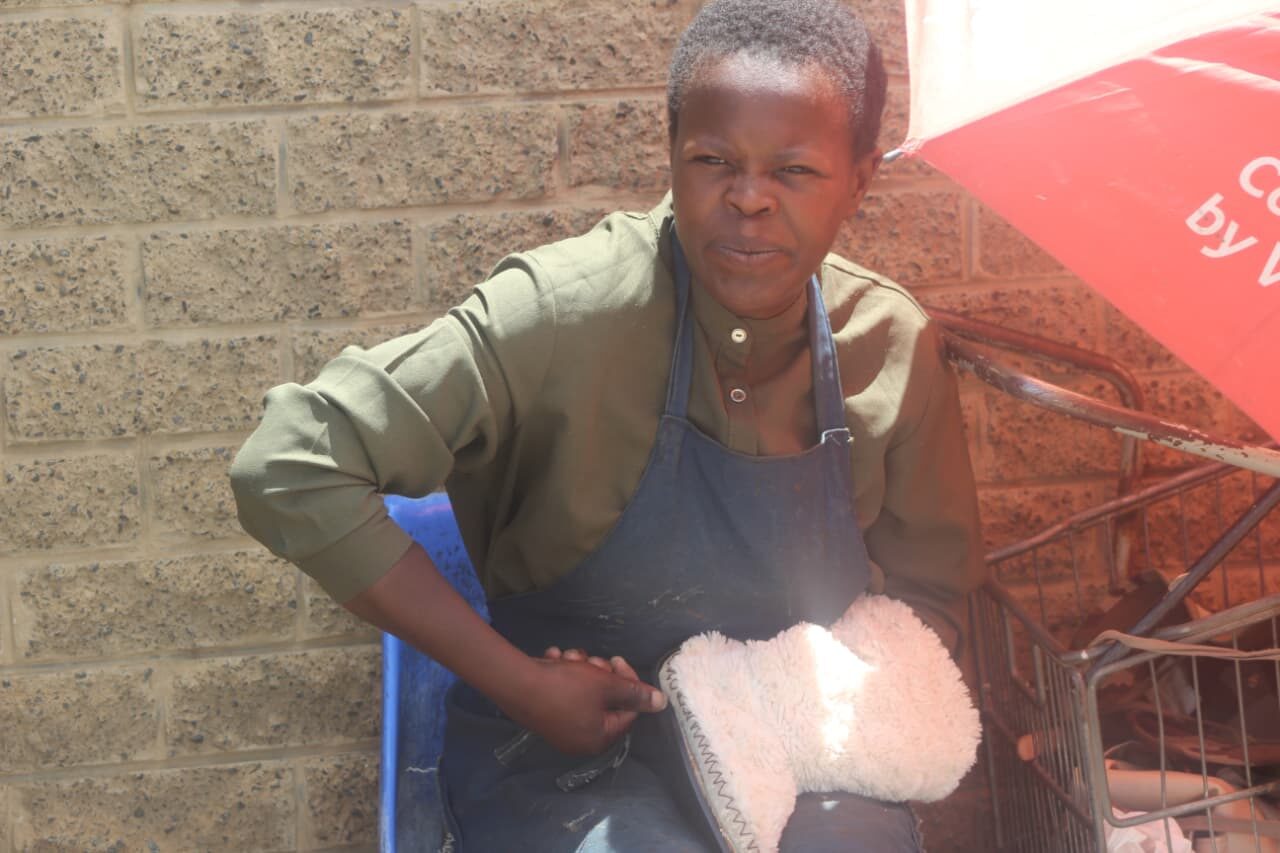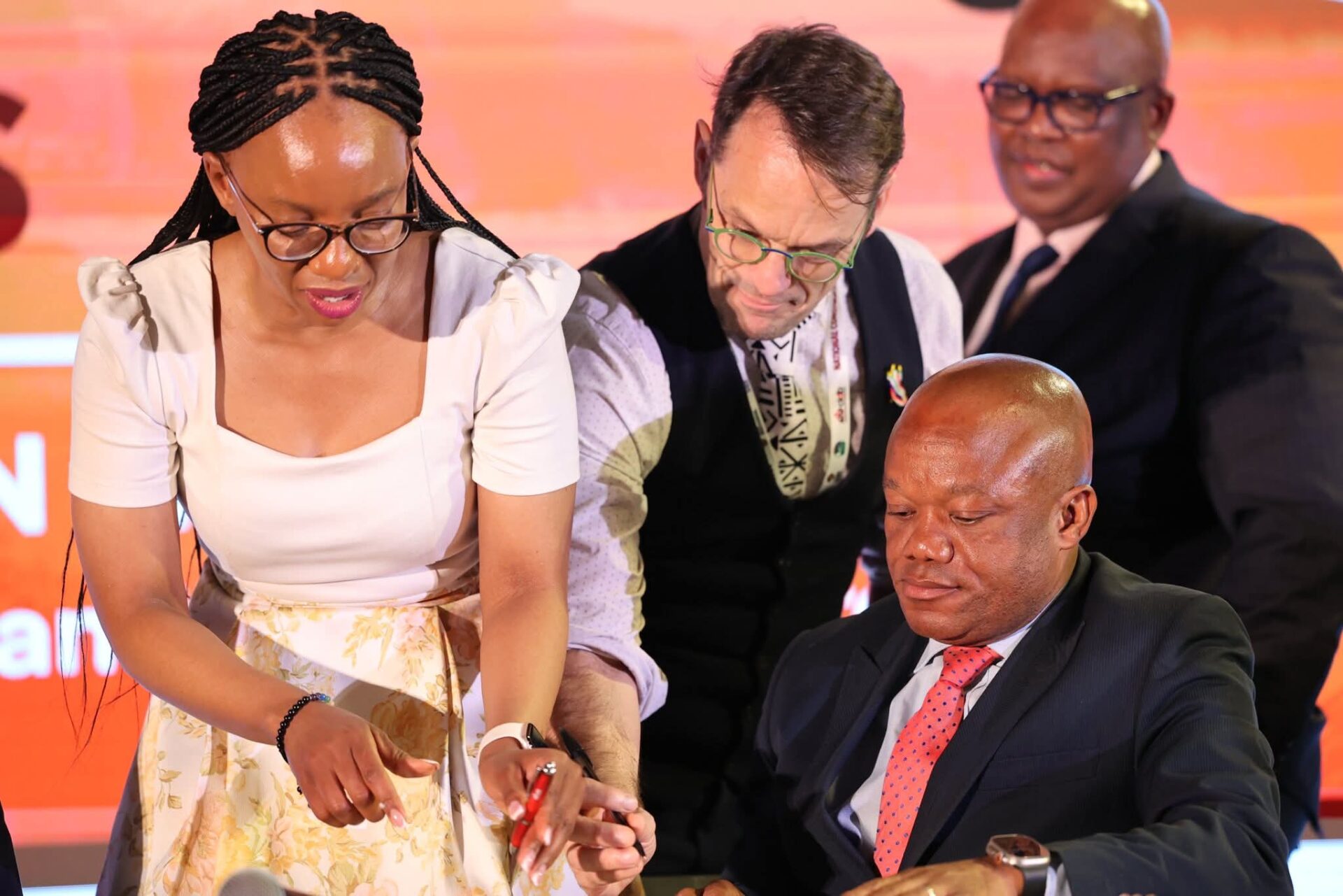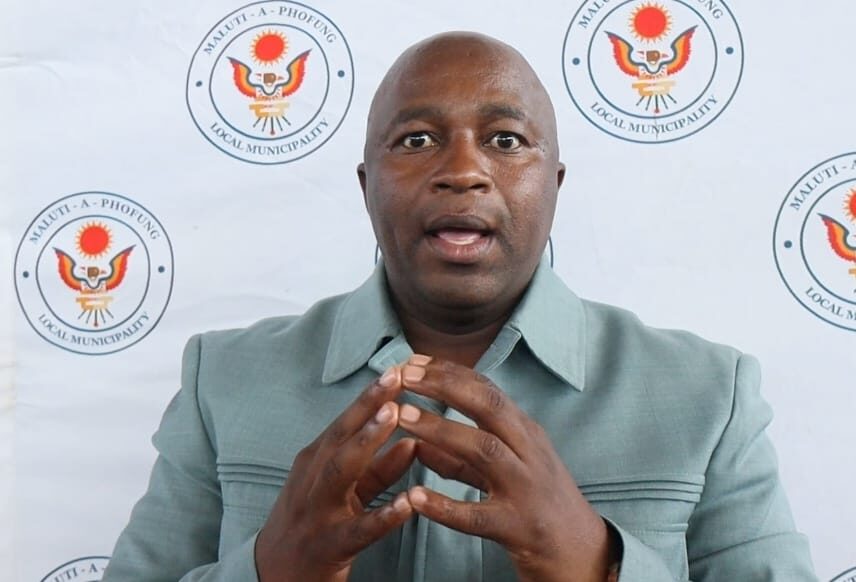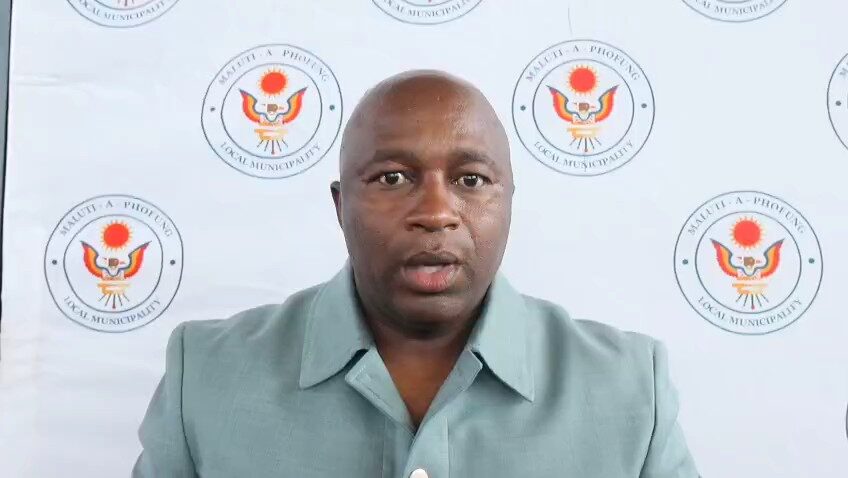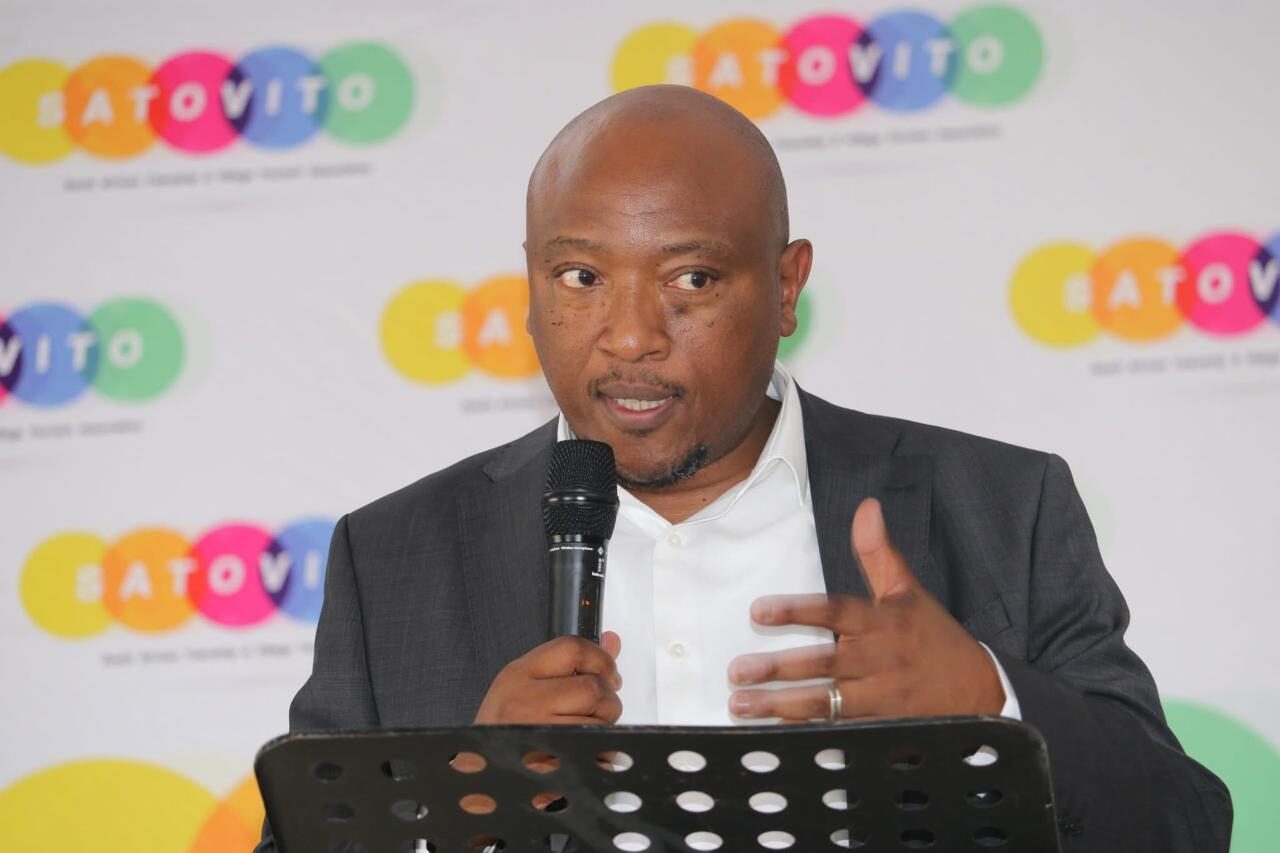By Emily Setona
CLARENS – Government has set aside over R300 million for the ongoing six-month maintenance of the Lesotho Highlands Water Project (LHWP) tunnel, with engineers from both South Africa and Lesotho collaborating to ensure the system’s longevity and effectiveness.
The tunnel, spanning 38 kilometers, delivers over 780 million cubic meters of water annually from Lesotho to South Africa and is integral to supplying water to four provinces, including Gauteng and the Free State. This include Rand Water which in turn supply to various municipalities.
Deputy Minister of Water and Sanitation David Mahlobo emphasized the necessity of investing in infrastructure to extend its lifespan, stating, “We have put aside an amount of R300 million just for the work that we need to do on the tunnel. Doing maintenance is the right thing to do because when you have an asset, you need to invest in it so that you can get the benefit out of it in terms of service and an increased lifespan. This time around, from this maintenance project, we are going to get an additional 20 years.”
Trans-Caledon Tunnel Authority (TCTA) Chief Executive Officer (CEO) Percy Sechemane outlined the critical nature of this operation, noting that maintenance on the tunnel is conducted every five years to ensure its structural integrity.
“Every five years we go into the tunnel, and the last time we were in the tunnel was in 2019. The scope of work is determined during these inspections, and necessary repairs are carried out immediately.
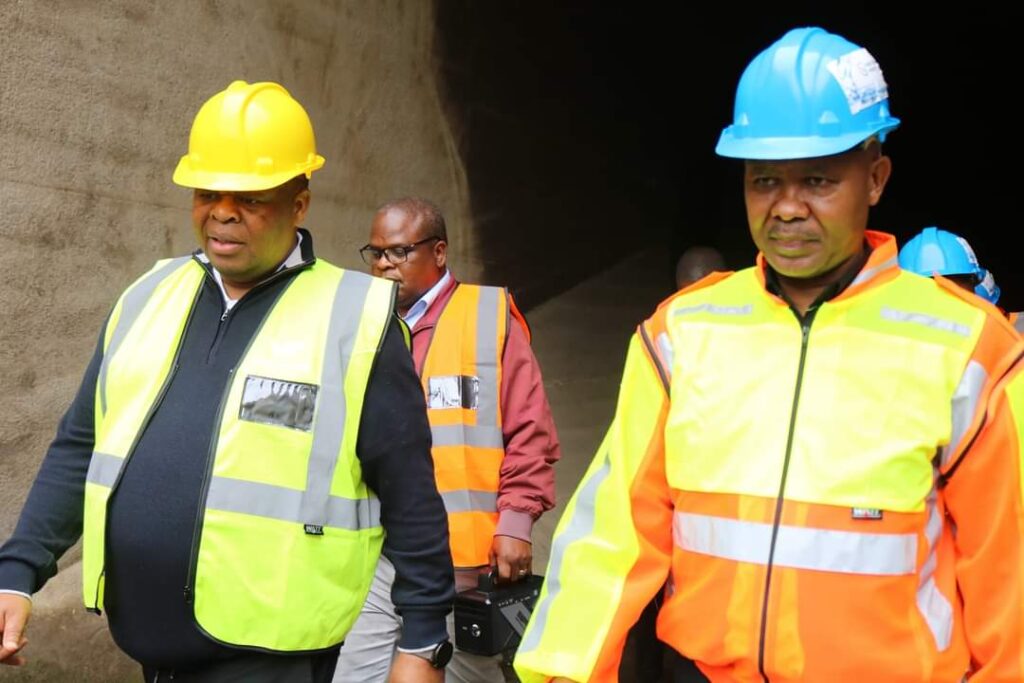
Deputy Minister of Water and Sanitation David Mahlobo on right with acting premier of the Free State Jabu Mbalula leading media tour of the LHWP tunnel inspection.
This is the longest shutdown of the tunnel, reflecting its aging infrastructure and the need for comprehensive updates.”
This maintenance period is not just about ensuring continued water delivery but also highlights the interdependence between South Africa and Lesotho. Acting Free State Premier Jabu Mbalula remarked,
“This project ensures that the two countries work together to secure water supply for both. We, as the government, are happy with the work we see being done here.” Officials from both countries have called on their citizens to cooperate by conserving water and energy during this period.
Conservation measures are critical, especially as South Africa relies on the Integrated Vaal River System to offset reduced water transfers, and Lesotho faces increased electricity imports due to halted power generation at the Muela Hydropower Station.
This project is a testament to the shared commitment to sustainable resource management and regional solidarity, ensuring that the LHWP continues to provide vital services for decades to come.









